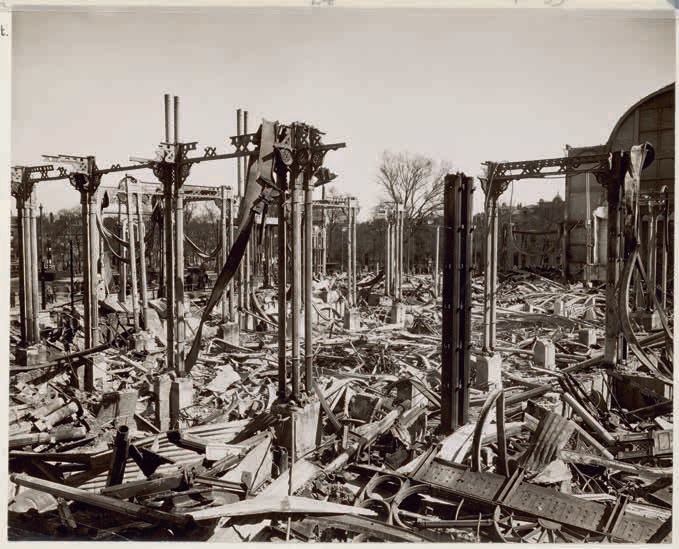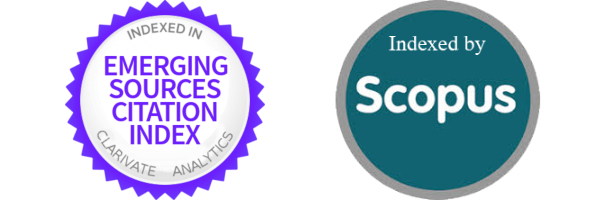Genuine architecture
On authenticity and adaptive reuse
DOI:
https://doi.org/10.48003/knob.119.2020.4.699Downloads

Abstract
This article is an appeal for independent, broad architectural-historical research prior to the redevelopment of buildings to protect their potential historical value and cultural significance. Authenticity is understood here as historicity and the article explores what it might signify in adaptive reuse, a growing sector in architectural design that is increasingly coming to be regarded as a separate discipline. In adaptive reuse strategies the building is viewed primarily as an architectural object that is to be given a ‘new life’. But does that allow sufficient attention to be paid to the historicity of our living environment? How resilient and sustainable is a repurposed building? Stories that touch on the building, on testimonies in which place plays a role, on the intentions behind the design, and on changes to use: all these intangible aspects together determine the cultural value of the building in society, community and setting. That historicity, or genuineness and singularity, is crucial to the building’s significance.
What is needed above all is for the description of the historical and accumulated cultural value and Significance of a building and place to be the starting point for redevelopment. Otherwise the spirit of the place disappears to be replaced only by novelty and entertainment, at the service of the contemporary consumer.
References
Deze bijdrage borduurt voort op enkele ideeën die ontstonden in nauwe samenwerking met Marie-Thérèse van Thoor, Gabri van Tussenbroek, Ronald Stenvert, Jan van der Hoeve en Edwin Orsel ten behoeve van twee aanvragen voor programmatisch onderzoek bij NWO van enkele jaren geleden (niet gehonoreerd), en op lopend onderzoek van de auteur naar de geschiedenis van aanpasbare architectuur. Literatuur geraadpleegd voor dit artikel: C. Bloszies, Old buildings, new designs. Architectural transformations, New York 2012; E. Braae, Beauty redeemed. Recycling post-industrial landscapes, Risskov/Bazel 2015; Crimson, Re-Arch. Nieuwe ontwerpen voor oude gebouwen, Rotterdam 1995; P. Diederen, Ontwerpen van verandering. Intreerede prof. ir. Paul Diederen. Uitgesproken op 1 juni 2018 aan de Technische Universiteit Eindhoven (https://research.tue.nl/nl/publications/ontwerpen-vanverandering); S. Gelinck e.a., Rekenen op herbestemming. Idee, aanpak en cijfers van 25 + 1 gerealiseerde projecten, Rotterdam 2015; R. van Hees, S. Naldini en J. Roos, Durable past – sustainable future, Delft 2014; H. Ibelings en Diederendirrix Architects, Make it anew, Amsterdam 2018; M. Kuipers en W. de Jonge, Designing from heritage. Strategies for conservation and conversion, Delft 2017; M. Kuipers en W. Quist, Culturele draagkracht. Op zoek naar de tolerantie voor verandering bij gebouwd erfgoed, [Delft] 2013; P. Meurs, Heritage-based design, Delft 2016; P. Meurs, M. Steenhuis en J. de Groot, Reuse, redevelop and design. How the Dutch deal with Heritage, Rotterdam 2017; P. Nijhof e.a., Herbestemming industrieel erfgoed in Nederland, Zutphen 1994; B. Plevoets en K. van Cleempoel, Adaptive reuse of the built heritage. Concepts and cases of an emerging discipline, New York 2019; R. Roorda e.a., Vital architecture. Tools for durability = Vitale architectuur. Gereedschap voor levensduur, Rotterdam 2016; J. Saris, S. van Dommelen en T. Metze, Nieuwe ideeën voor oude gebouwen. Creatieve economie en stedelijke herontwikkeling, Rotterdam 2008; F. Scott, On altering architecture, Londen 2008; M. Steenhuis, P. Meurs en A. Kuijt, Herbestemming in Nederland. Nieuw gebruik van stad en land, Rotterdam 2011; H. Stevens, Hergebruik van oude gebouwen, Zutphen 1986; S. Stone, UnDoing buildings. Adaptive reuse and cultural memory, New York 2020; K. Vandenbroucke, Mag dit weg. Methodiek voor herbestemming, Rotterdam 2020; L. Wong, Adaptive reuse. Extending the lives of buildings, Bazel 2016.
E.M. Merrill en S. Gimarelos, ‘From the Pantheon to the Anthropocene. Introducing resilience in architectural history’, Architectural Histories 7 (2019) 1, doi. org/10.5334/ah.406; K. Trogal e.a., Architecture and resilience. Interdisciplinary dialogues, Londen 2019; M. Trachtenberg, Building-in-time. From Giotto to Alberti and modern oblivion, New Haven/Londen 2010; J. van Ooijen, ‘Resilient matters. The cathedral of Syracuse as an architectural palimpsest’, Architectural Histories 7 (2019) 1, 26, doi.org/10.5334/ah.65
S. Brand, How buildings learn. What happens after they’re built, New York 1994.
Zie hiervoor ook F. Schmidt, ‘Moet opgeknapt worden. Gebouwen en hun aanpassingen’, in: R. Stenvert en G. van Tussenbroek (red.), Het gebouw als bewijs. Het bouwhistorische verhaal achter erfgoed, Utrecht 2016, 145-208.
Merrill en Giamarelos 2019 (noot 2).
In D.M. Abramson, Obsolescence. An architectural history, Chicago 2016 laat de auteur zien dat de hoge omloopsnelheid en het afdanken van gebouwen in grote delen van de westerse wereld van de twintigste eeuw een simpel financieel model volgen.
R. Kousbroek e.a., Het paleis in de verbeelding. Het Paleis voor Volksvlijt 1860-1961, Amsterdam 1990; E. Wennekes, Het Paleis voor Volksvlijt (1864-1929). ‘Edele uiting eener stoute gedachte!’, Den Haag 1999; G. van Tussenbroek, IJzeren ambitie. Het Paleis voor Volksvlijt en de opkomst van de Nederlandse industrie, Amsterdam 2019.
H. Heynen, ‘Introduction to the theme “Petrified Memory”’, The Journal of Architecture 4 (1999) 4, 331-332, 332.
H. Heynen, ‘Petrifying memories: architecture and the construction of identity’, The Journal of Architecture 4 (1999) 4, 369-390, daarbij gebruik makend van M.C. Boyer, The city of collective memory. Its historical imagery and architectural entertainments, Cambridge 1994.
Heynen 1999 (noot 9).
Beleidsvisie ‘Kiezen voor karakter, Visie erfgoed en ruimte’. Kamerstuk 15 mei 2011, 10. www.rijksoverheid.nl/documenten/kamerstukken/2011/06/15/beleidsvisie-kiezen-voor-karakter-visieerfgoed-en-ruimte (20 juli 2020).
Zie noot 1.
Uitzondering hierop vormen Roorda 2016 (noot 1) en Kuipers en De Jonge 2017 (noot 1), voornamelijk voor de aan Frank Duffy ontleende ‘shearing layers’.
Brand 1994 (noot 3), 210.
Brand 1994 (noot 3), 2. Elders (p. 53) waarschuwt Brand ook nog tegen ‘overontworpen
gebouwen’, die nauwelijks aanpasbaar zijn.
Plevoets en Van Cleempoel 2019 (noot 1).
C. Norberg-Schulz, Genius loci. Towards a phenomenology of architecture, New York 1980.
Plevoets en Van Cleempoel 2019 (noot 1), 92-93; 126-131.
‘This juxtaposing of different historical layers, however, did not compromise the authentic experience of the site. On the contrary, it enhances the richness and depth of its memory.’ Plevoets en Van Cleempoel 2019 (noot 1), 92.
Plevoets en Van Cleempoel 2019 (noot 1), 93: ‘We believe that for the discipline to move further, the future practice and theory of adaptive reuse should aim not just at respecting what is handed over from the past to the present but instead should actively search for the values and memory of the host space and try to establish a meaningful relationship between the present and the past through a sequence of tangible and intangible associations.’
Published
How to Cite
Issue
Section
Articles
License
Copyright (c) 2020 Freek Schmidt

This work is licensed under a Creative Commons Attribution 4.0 International License.





